Announcement
Collapse
No announcement yet.
Around the world on a GS850G for a cause
Collapse
This is a sticky topic.
X
X
-
 thehorseman1955
thehorseman1955
well i read this thing all the way through in 1 sitting.what a great thing to be doing in so many ways.will keep track of your exploits and try to help if can
-
Chris, you are breaking too many clutch cables, there is something wrong. Is the clutch lever worn out so the bearing on the end of the cable can't turn? You are lubing it right? Is the perch worn out? Is the lever too sloppy in the perch? is there a kink somewhere so you have to pull too hard? Is there enough slack in the cable?
They should last 20,000, 30,000, or maybe 50,000 miles depending on usage.
Comment
-
 DanTheMan
DanTheMan
Yeah, I've still got my original on my bike, almost 90k miles on it now.Originally posted by tkent02 View PostChris, you are breaking too many clutch cables, there is something wrong. Is the clutch lever worn out so the bearing on the end of the cable can't turn? You are lubing it right? Is the perch worn out? Is the lever too sloppy in the perch? is there a kink somewhere so you have to pull too hard? Is there enough slack in the cable?
They should last 20,000, 30,000, or maybe 50,000 miles depending on usage.
Comment
-
 shirazdrum
shirazdrum
The MT66's are not that great. If you're thinking of buying a set, just don't. The full review by me is coming which will surprise the hell out of every Pirelli lovers.Originally posted by almarconi View PostHow have the Pirelli RT66 tires been holding up?
thehorseman1955,
Welcome to the board and thanks for tuning in. Where in MN are you in?
Tom and Dan,
You guys are right. The last two cables were of very bad quality and that's why they broke. The HD clutch springs are not helping but the main issue was that the last two cables didn't come with the little plastic swivel thingy. The old original suzuki cable which tom gave me in Colorado is working like a charm, much smoother and nicer. I keep oiling it and it keeps on pulling. the plastic thingy is wearing off thou and i can't find another one. I gotta think of something.
Comment
-
 shirazdrum
shirazdrum
ENTERING GUATEMALA
We arrived at the Guatemalan border to find out that we should have gone to the customs 40 minutes back in Talachupa to process the cancellation of the Mexican registration/import permit. Apparently, if you donít cancel this permit before leaving the country and donít came back into the country before it expires, you will be charged $500.00, plus a fine if you try to enter into the Mexico again with a vehicle. We tried to see if we could sort this out by email or phone but were told that no, each car had to go back to La Garita or else potentially be charged $500.00. The RGE guys contacted the British embassy to see how negative the ramifications would be if we didnít go back. They said it would mostly likely be ok and that they would call the custom for us from the British embassy.
We barely went a few meters out of the border queue and ended up mobbed by a crowd and unable to move. The police were quick to respond, and they guarded us guns in hand and offered to escort us all the way to our destination at Guatemala City. We had a long delay at that juncture as we worked on sorting out the temporary importation status of the vehicles. Apparently, we had gone to a different place to cross the border than where we had originally planned to cross which is partly why things didnít go as smoothly.
With a throng of people around us, we waited around and made conversations with the locals. All the tropical rain had washed off my shoe polish so I got the best shoeshine of my life from a little boy who worked on my shoes as if I was the president. For one dollar, my combat boots were as shiny as any Generalís. A lady gave Cynthia a Rombego (a local fruit) to try for free as we didnít have any cash, and later a girl approached us and gave us a whole bag of the spiny red fruits. On the inside they look like a large peeled grape and turned out to be succulent and delicious. We shared some with the kids and the police, and the girl invited us to her motherís store and they gave us a picture to remember our time there and gave Cynthia a keychain. Once again, we have been impressed by the kindness of people to complete strangers.
Finally around 6 p.m, the border ordeal was over, and we started out on the road to Guatemala City. The road was lined by palm trees, banana plants, and many other lush plants. We passed grazing cows, chickens, muddy rivers, and many people walking along the road or riding in bike-cart taxis. After a gas station stop to fuel up for the bike, it was a bit surreal to see how the police with their guns stopped traffic for us to merge back onto our route for no apparent reason other than they could! By now it was dark. Almost immediately we started to encounter potholes of a size and frequency that made me feel like I was trapped in a video game. Trying to avoid them and radio back to the SRZero was quite a feat and took all my concentration. It was pouring as well, naturally. The hours of riding in the rain didnít help. When we arrived to Guatemala City around 4 a.m., I was more sick, hypothermic, tired and ready for the bed.
Our stay in Guatemala didnít turn out to be what I envisioned. I wanted to stay at least a month in Guatemala since this country is in the grip of a protracted food insecurity crisis, and the current situation of food insecurity is worsening what is already one of the highest rates of chronic malnutrition in the world (affecting 43% of children below five years of age). We highlighted a malnutrition clinic in Guatemala a few post back. While it was our wish to visit this clinic personally, we were disappointed that the strict schedule of the RGE team prevented us from being able to visit there or other clinics. Needless to say, this is a country with tremendous needs.
I also had a few contacts and a motorcycle club I wanted to visit while there which we had to skip as well. We stayed in Guatemala for 2 days and I honestly donít remember a minute of it. I was down with high fever and the next thing I remember is getting back on the bike heading fast for El Salvador.
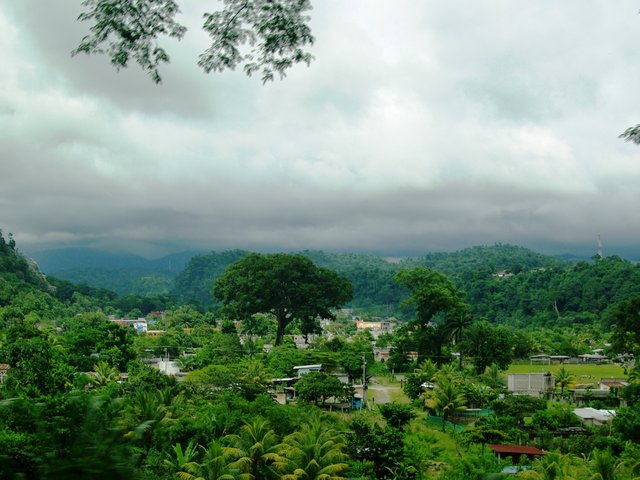
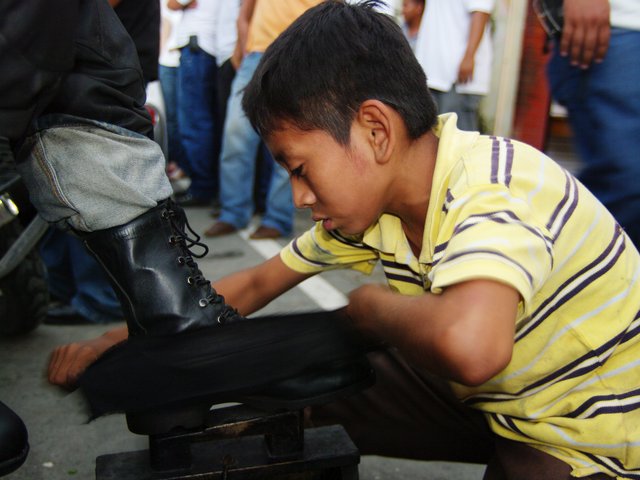
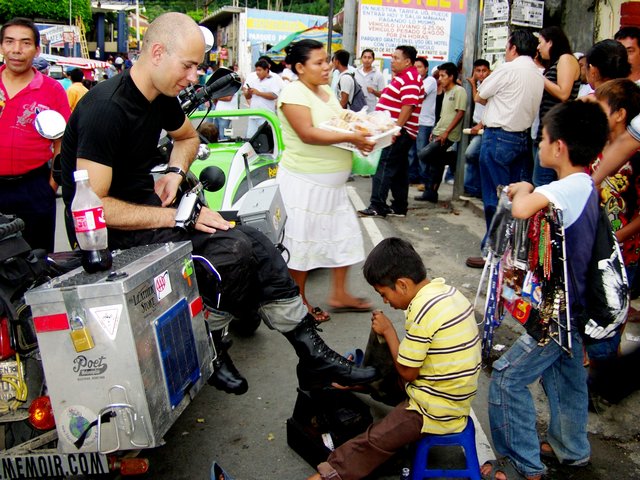
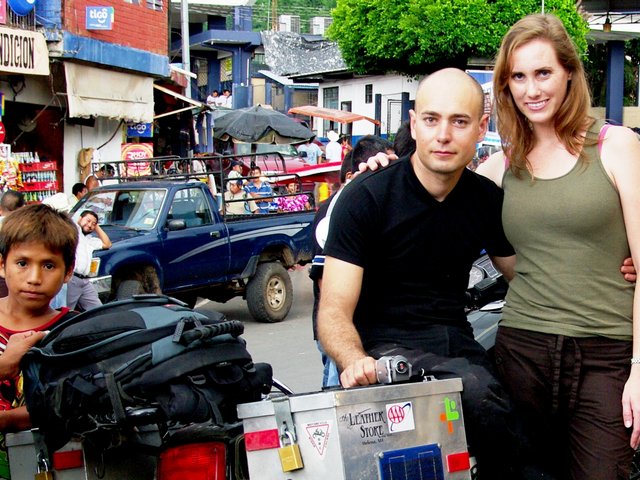
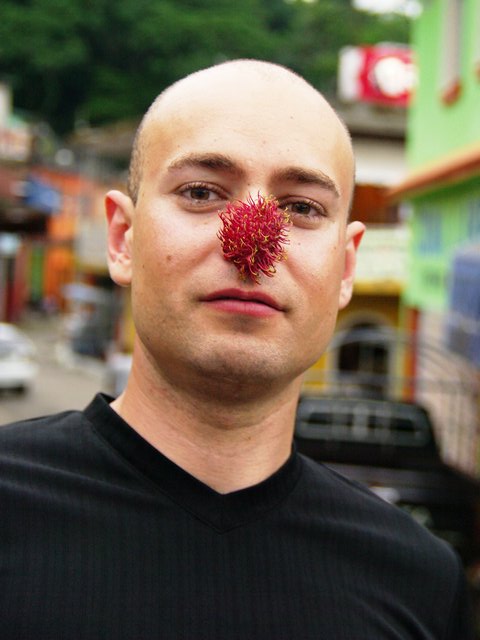

Comment
-
 almarconi
almarconi
I have a set on my GS and I have been happy with them. I don't got off-road with them but for paved roads they work fine. My bike does not weight nearly as much as yours since I don't ride 2 up or carry a lot of gear.The MT66's are not that great. If you're thinking of buying a set, just don't.
Comment
-
 Richsuz
Richsuz
Hey Chis,Richard here in Guatemala. Where you able to sort out your Mexican import papers away from the border? I have the same situation. Spent several weeks traveling through Mexico in the summer (From Guatemala all the way up to Jalisco, and around. On the way back I was unable to turn in my temporary import papers, because I crossed the border on Sunday. Sunday they close the BANEJERCITO office at 3:00 PM. I got there at 3:05 and the officer at the booth said, he could not do anything, to come back the next day. Mind you, the nearest Hotel is 100 kms away. He also told me that I did not have to process the papers until Dic 30th, 2010, so I had a window to do it. Well due to sever weather, the roads were impassable for a few weeks. Literally people got killed under road slides. Unfortunatly I had a bike accident, broke my femur in two, knee cap in 3 and had an exposed fracture to the Tibia (14 screws and two plates). I am not going to make it to the border on time, since I don't even know how many months before I can walk again. I called the embassy and told me I had to return WITH the bike in person. I am looking your solution to the problem, so I can use precedence and avoid the fine and also be able to complete my trip through Mex next summer. BTW, sorry we did not connect, Like I said, the University you stopped at "Mariano Galvez", was less than 100 mts. from my house. And the fruit you were treated to at the border, its called Rambutan. Not native to Guatemala, imported from SE Asia a few years ago, but took off nicely.Vsss and safe trip
Comment
-
 shirazdrum
shirazdrum
Rich,
We're still struggling with the cancellation as well. The guys at the British embassy didn't deliver what they promised. I will call the Mexican consul in US and will ask them to contact them. Hopefully they will be more helpful. I have another 3 months to cancel so Iíll do everything I can and will keep you updated. If they go for it, Iíll give you the contacts so you can do the same.
Iím sorry to hear about your accident, I remember the road very well in Guatemala. I've never seen that much rain in my life. I have a picture of a tree the size of a 2 story building rolling in the middle of one of the flooded rivers. It really suck that we didn't get to meet, hopefully Iíll make my way back up and do it properly.
Get well soon.
Almarconi,
I loved the MT66 for about a week until the heavy rains started. The traction was awful, anything off the tarmac was scary to say the least and I had 4 flats in 2 weeks in two brand new tires. One was a giant nail which would puncture any tire but the other 3 were small scarps that couldnít even cut butter. The compound of this tire is very soft but itís not sticky. The walls are very thin, and there is not much meat on the treads. At 4000 miles, the rear was completely bald with no tread left at all. At 10 mph, we hit a little patch of sand and it almost sent us flying.
I only recommend them for very dry places like Arizona but I still think there are much better tires for the price. Just my 2 cents.
Chris
Comment
-
 DanTheMan
DanTheMan
Chris, I'm on my second set of the "new" Scorpion Trail, the succesor to the old Scorpions. So far they've performed quite well, tread life is nearly gone now with 8000 miles on the rear and 18000 on the front. They don't handle too well now, but they've done well so far, so Motorcycle Superstore had them on sale and I bought another pair. We'll see how they do, of course even on sale they're about $20/pair more expensive than the other Scorpions.
Comment
-
 shirazdrum
shirazdrum
Dan,
I used to run scorpions on the Gs and i liked them but they discontinued them. I wanted to try the trails but i went with the Kenda 761 and i liked them even more. MS has very good prices on tires and i even tried getting some from them while in Mexico but unfortunately they don't ship outside of US. The shipping charges were out of this world (400 bucks for two tires) so i started buying tires locally. There are many good tires to be had down here sometimes even cheaper than US. I can't find any Kenda though as they have no market in south America.
Comment
-
 shirazdrum
shirazdrum
EL SALVADOR, THE MOST DANGEROUS COUNTRY
I was still in recovery mode so Claudio took on the riding task with Cynthia going as pillion. I got lucky as the second they took off, the monstrous rain started again, and this time it rained so hard that small rivers started forming on the road. We left Guatemala prematurely and headed flying for the border of El Salvador. The border was pretty impressive. One side was Guatemala, other side El Salvador, and a raging river separated the two land masses. The border ordeal was a typical one lasting several hours. A million signatures, 200 copies of every document and at the end getting a license plate number wrong and having to do it all over again.
El Salvador is a different country and you can tell the second you pass over the border. Every house and I mean, literally, every house is protected with a tall fence plus broken glass and barbwire on top. Armed guards are everywhere, from gas stations to even a simple doctorís office or pharmacy. Our hotel in San Salvador, the capital of El Salvador, had a guard with a chopped-off shotgun and a Glock, and this was a very good neighborhood to begin with. The capital city looked like an American colony with the only difference being the language. From Wal-Mart to Pizza Hut and Starbucks to Subway, the streets are filled with American brands and American- made cars. The currency is even the US dollar, and the government is rightly accused of being an American puppet.
El Salvador has one of the biggest gang problems in Latin America which is not surprising, and is home to the notorious Mara Salvatrucha (the MS-13 gang). It came out of a bloody civil war which took 13 years and left more than 75,000 dead on both sides of the conflict. Many families fled the country and the majority landed in the United States. Many El Salvadorians kids grew up in the US during the war and when they returned home (in most cases deported because of their criminal acts), they had nothing in common with the locals. These very same young men started their own US influenced gangs and started killing each other for lack of better things to do. Most of these gang members speak perfect English with an American accent and not so much Spanish and are covered in fierce tattoos from head to toe.
El Salvador, like Guatemala, struggles with food security and has one of the highest rates of chronic malnutrition in Central America. The problem starts with poverty and combined with a lack of education, creates a horrific result. To compound the situation, Latin Americans are mostly devout Catholic, and one thing the Catholic Church promotes and never condemns is having more babies.
In rural El Salvador the men are typically found passed out on hammocks outside of the shacks, while the women do every hard labor chore imaginable. These very same men take many women, and some have more than 12 children with no income to speak of. Women are forced to raise the kids on their own. The mothers are often malnourished themselves with no breast milk to speak of. Coffee and tortilla, the only two food staples at hand, are made into a mush to feed the babies. In three weeks, the babies are so sick and skinny that many of them die in the jungles before reaching their first month. The government figures of the fatality rate for children in El Salvador are inaccurate as most of these babies are born without ever having a birth certificate let alone a death certificate.
To make it worse, the malnutrition programs are run by the government and when admitted to the hospitals, eight out of ten babies will never make it out. The governmental hospitals typically only treat the presenting illness but do not treat malnutrition nor provide any education or help to the families.
While in San Salvador, we were hosted by a super nice Salvadorian family and they showed us the utmost hospitality. Claudia Aguirre and her father run the KMPG office in San Salvador. (KPMG is a global financial institution in a nutshell). They put us up in a hotel and drove us all around the town for our every need. Over the mealtime, when they found out that we are raising awareness for world hunger, they arranged for us to visit their friends who run a malnutrition clinic (the report on this visit will be in the next post). El Salvador is a beautiful country with wonderfully hospitable people. So far on the trip, El Salvador is the place that has felt most like home.
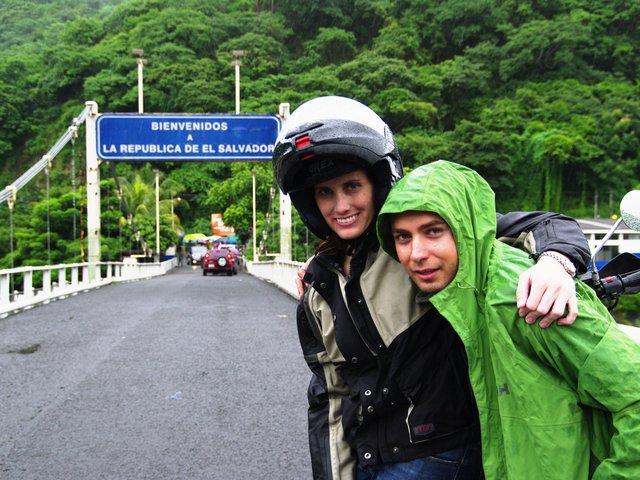
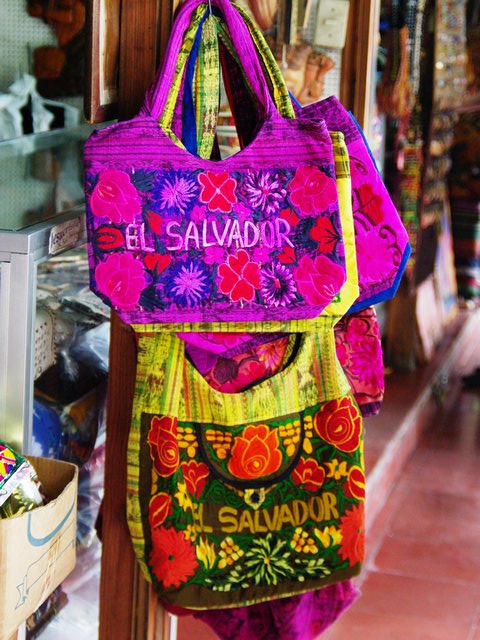


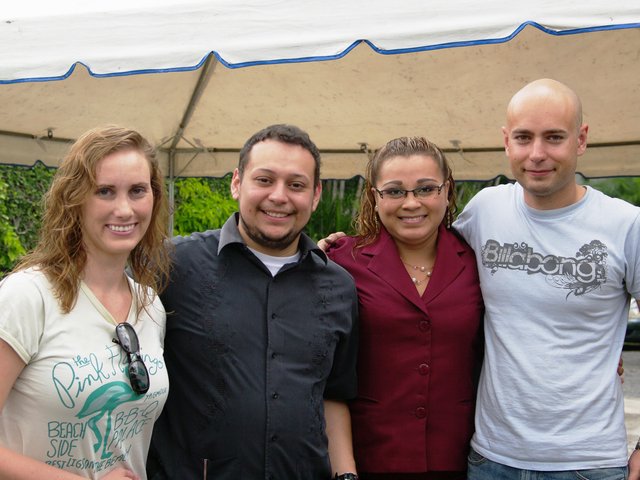
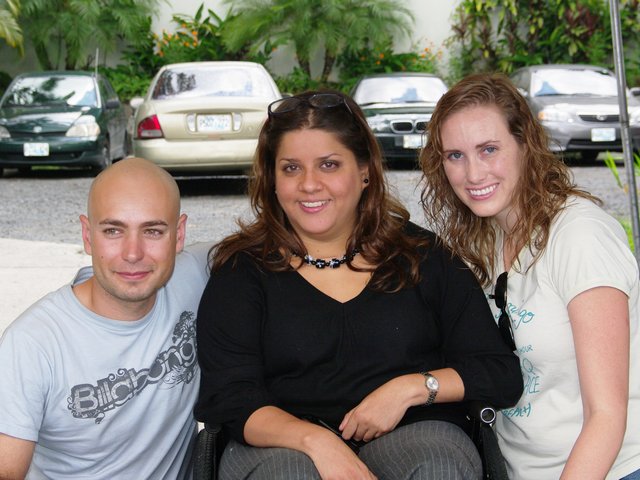
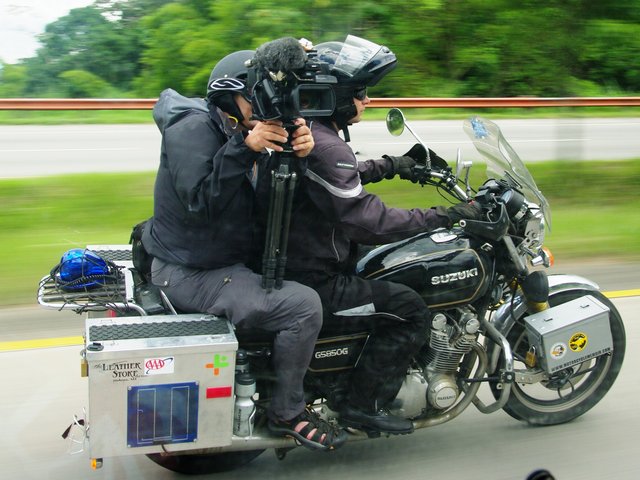
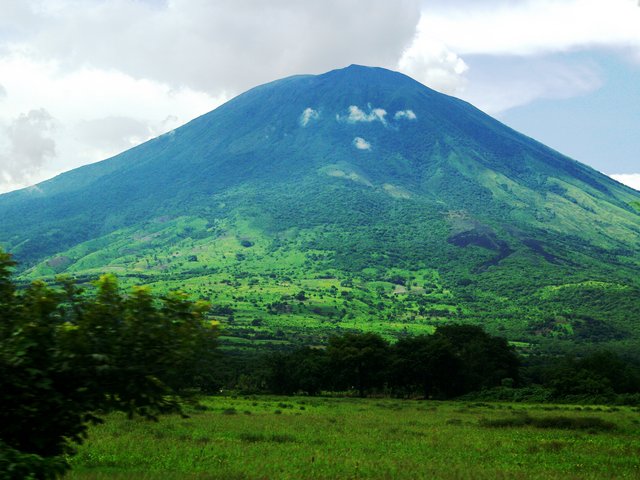
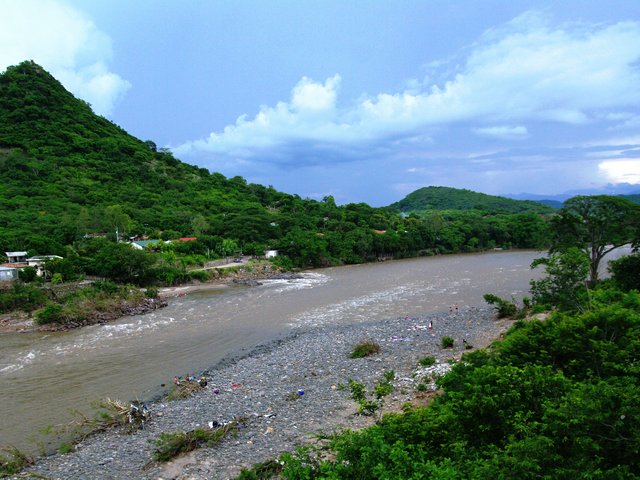

Comment
-
 shirazdrum
shirazdrum
SEP 6TH. THE LOVE LINK
Is it destiny that makes our course or is it the path that dictates our fate? Many follow their fate, but a few write their own. Sam Hawkins is such a person. Two weeks after we met this incredible man, he had a misfortune and while opening a bottle of chemicals, it exploded in his face and resulted in second degree burns from the neck up. When I received the news I was in shock as to why such a calamity could happen to such a saint-like person.
At age 71, Sam is as young at heart as any child. The twinkle in his eyes, his enthusiasm, his cowboy boots and thick Texan accent set him apart from the Salvadorians, but if that wasn’t enough, at six foot and some change, he stands out in the middle of the short Latin American crowd. Sam and his lovely wife, Julie, came on a church mission trip to El Salvador years ago during the civil war. But it wasn’t the church mission that changed him; it was a little malnourished baby boy, abandoned in a sugar cane field that made Sam who he is today. Sam and Julie took the boy in, cared for him and after long nights of struggle, he made it. Twenty-two years later, he’s alive and well and residing in Bangor, Maine and is getting married in a few months. They named him Eric. Since Eric, Sam and Julie made it their life work to open their door to every malnourished child they could find, and they have treated and saved over 1200 malnourished babies to this day. They made El Salvador their home and as Sam puts it, “I’ll never leave El Salvador.”
We met Sam through Claudia Aguirre who arranged the meeting at her office. We met Sam at 8 am and talked for hours before heading for the baby house. Before we left, I took him out on the bike for a ride and he loved it. His eyes were lit up like a little boy, and he hung on to me for the dear life as sped up through the tight streets of San Salvador. He really wants a motorcycle, but his wife Julie is very apprehensive. With a funny/sad face he said “She won’t let me.”
The baby house was incredibly clean and bright. Apparently Sam worked out at the gym next to the richest guy in El Salvador, neither of them knowing what the other person did. They talked about everything and anything but work. The guy finally found out about what Sam did and he donated the current baby house for the cause before he died. We met Julie at the baby house and she had no less enthusiasm than Sam. They are a perfect couple and they work together in perfect harmony. We played with the kids, got the tour and were amazed at their generosity. Over lunch, Sam told me about his other work. He started to visit prisons trying to rehabilitate the Salvadorian gang members. The government just puts more pressure on the gangs, shooting them when they can and treating them brutally when they get their hands on them (and they probably deserve it), but Sam’s way is the love way. The gang members actually listen to him, and no one bothers him. He created this program which he signs out prisoners and brings them back to society. He trains them, gives them the means and opportunity to have a job and education. They make handmade boots which they sell at the market and reinvest the profit back into the program. That’s why Sam is so proud of his boots.
We spent the night at Sam’s house, and after a delicious breakfast with Julie, we bid them farewell and got back on the road. It is heartwarming to see that there are still a few good men left who do everything and expect nothing in return. Get well soon Sam and thank you for being who you are. If you like to help out in his mission, consider making a donation of any amount, and we will forward it right to him. He has a nonprofit organization called the Love Link, but the website is not up to date and is hard to use. If you like to get a hold of him directly, contact me and I’ll provide you with the information.
Thanks to the wonderful KPMG staff, our stay in El Salvador was a memorable one. Salvadorian hospitality is hard to beat and this country will always stay in my memory. I hope I can make it back one day. Next stop: Honduras.

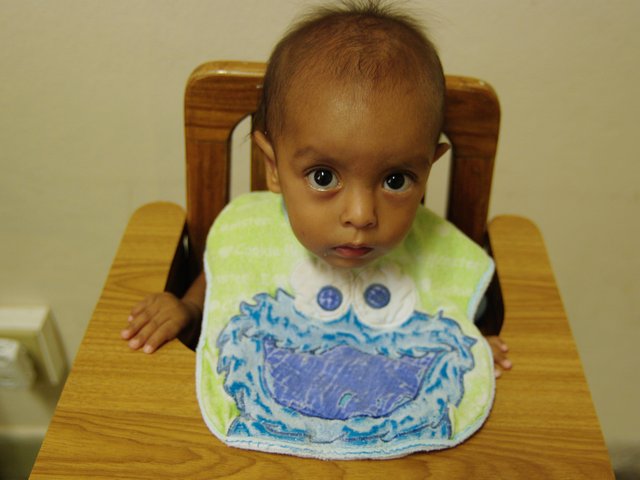
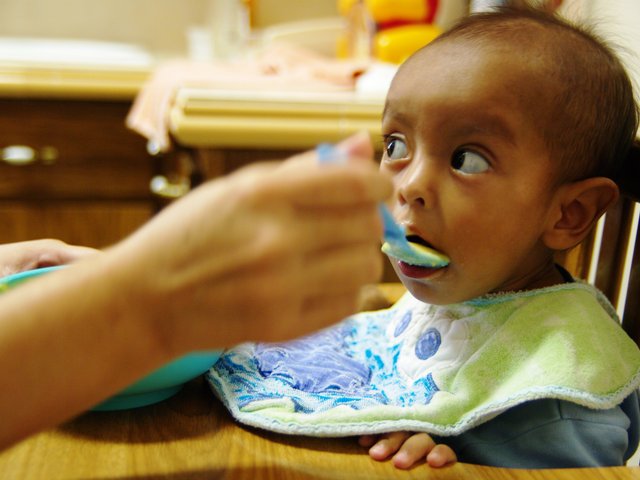
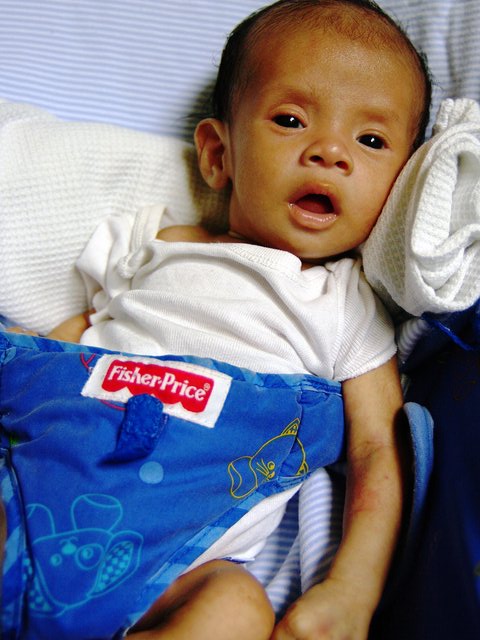
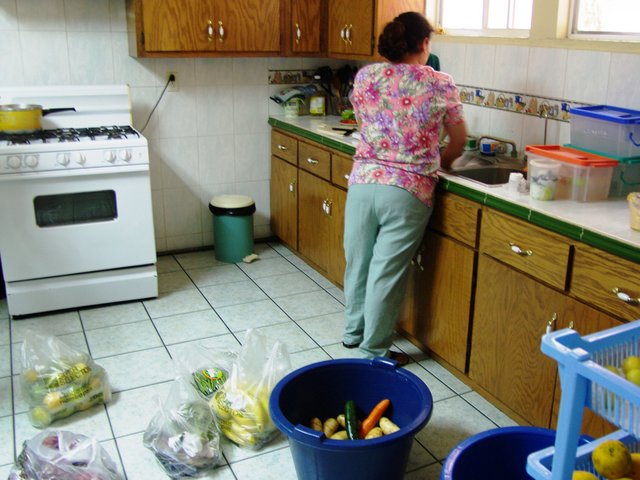
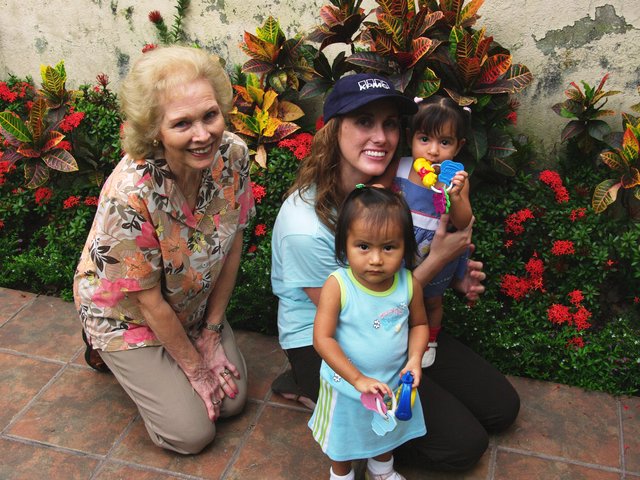
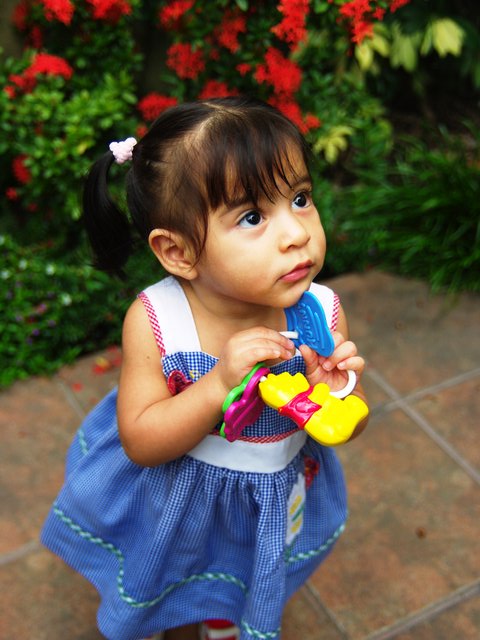
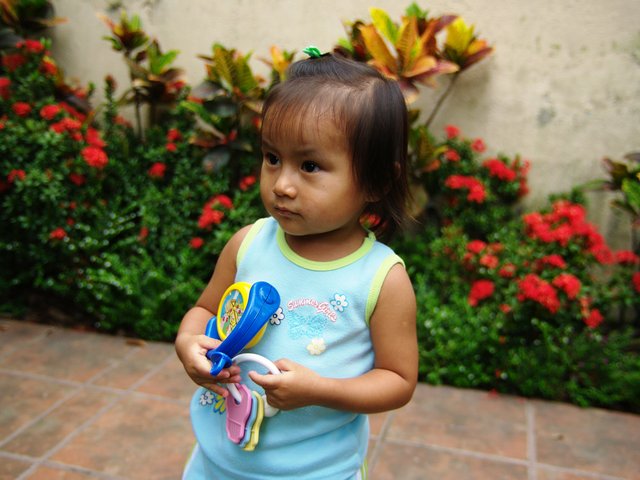
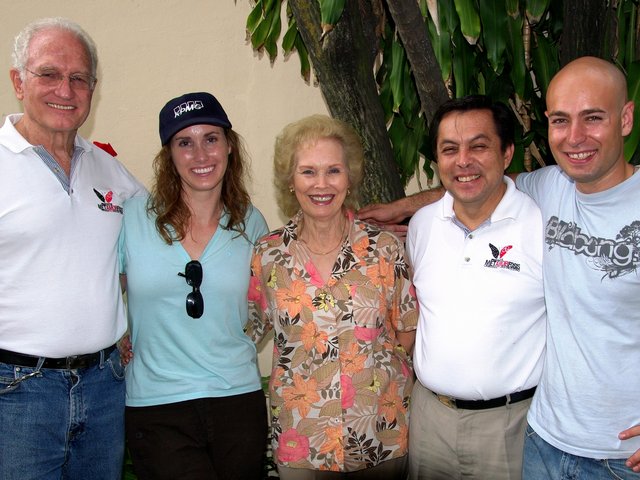 Last edited by Guest; 11-01-2010, 03:24 PM.
Last edited by Guest; 11-01-2010, 03:24 PM.
Comment
-
 shirazdrum
shirazdrum -
 shirazdrum
shirazdrum
POTHOLES IN HONDURAS
We left El Salvador amidst warm farewells from our new friends and with a police escort arranged by KPMG. Before we left, Edgar gave us a blue flashing police light, and I mounted it on the left front box. Itís fascinating to see how the traffic gets out of your way with a $6 light, and no one questions your identity. The rain made its customary appearance for part of the trip but abated by the border. We had made good time and were eager to do the border crossing and get to our destination. However, with all the good border crossings and encounters with police that we had so far, it was only a matter of time before we ran into one unscrupulous border agent. The mention of the word ďembassyĒ (The RGE Team has letters from the British Embassy) didnít seem to settle well with this guy who proceeded to detain us for 5 hours while everyone else was blithely passing on through. Of course, as with any stop we make, the SRZero and the bike were immediately surrounded by curious little and big people wanting to know about the car and bike and take pictures with their cell phones and cameras.
While waiting at the border we met some raw-food vegan cyclists from the US who were pushing to get to Panama on single gear bikes! They had no saddlebags, no tent or sleeping bag and what they wore was what they had. They slept at gas stations whenever they couldnít stay awake to bike anymore and ate nuts and fruits to stay alive. I donít know how they do it as I would die if I didnít eat meat for one day. We wish them a safe and successful journey. Cynthia got a warm welcome to Honduras by a zealous bee, and while that sucker stung, the welt it left wasnít any bigger than that of the monster mosquito bites she had acquired. In the end the whole delay at the border was solved by a ďdealĒ between our overly friendly, conveniently English-speaking ďfixerĒ and the grumpy border patrol man. Of course this deal involved paying some wads of cash.
We started not liking Honduras from the very start, and it kept getting worse. When we were ďallowedĒ to cross the border, it was already dark and our destination was 200k away. The rain came down lashing again, and the roads turned into Swiss cheese. The potholes got bigger and bigger to the point that it was hard to go any speed higher that 25mph. I radioed back to the SRzero and the van with directions on how to avoid each pothole. We got stuck behind a long truck line, and as I tried to pass, I sped up and entered the other lane and there it was: an abyss as wide as the road. I broke hard, but it wasnít enough, and we hit the hole with full force. The headlight went black, the front brake caliper jammed and the suspension bottomed out to the point that I heard a crack on my spine.
We limped to our destination about a mile away, and I started assessing the damage. The front rim was bent, sticking out about an inch. The right caliper was jammed, and the brake rotor was almost red from the heat. The headlight was busted, one fog light was out and a marker light lens broken. I started by dumping water on the rotor to cool it off and took the caliper apart. One of the slides was bent from the knock force, and it caused the jam. I hammered the slide back to shape and filed away the burrs, and it worked. The rim was more serious, and it took some precise banging and bending to get back to shape. When I got done with it, it was almost unnoticeable.
We ended up staying at the Lufassa power plant which provides approximately 33% of the Honduran electricity. We were hosted by Juan, the manager of the plant who took us to dinner at a seaside German restaurant. Juan was a very nice guy, and gave us a tour of his power plant which was impressive.
We left early the next morning to get to the Nicaraguan border, but as we entered the town of Choluteca, the rear tire went flat, our first flat of the trip. To my astonishment, the RGE team couldnít be bothered to wait for us and left us there with no help and continued on to have their lunch and cross into Nicaragua! Thankfully Juan came to our aid and had one of his guys go tube hunting with me. Finding the tube was the easy part, and we proceeded to a tire shop to change the tire. I took the wheel off, and the shop changed the tire for $5 USD. Juan arranged our own motorcycle police escort to the border, and we were home free. Iím still amazed that after helping the RGE guys out so much through these potholes, night after night, in the rain and in the middle of the night, they could just leave us there. Iím not doing this for money, and I can take care of myself just fine, but their lack of consideration made me uneasy. Claudio ended up having to yell at them and stop them at the border to at least wait for us.



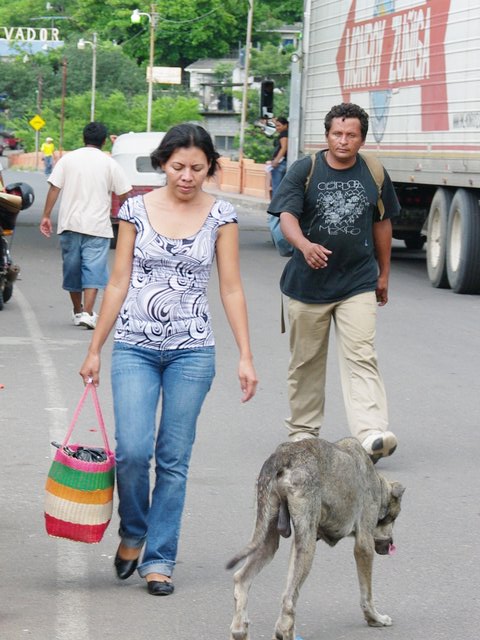
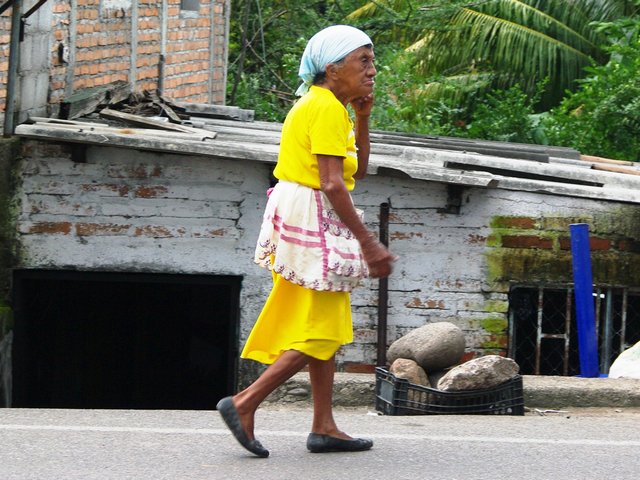
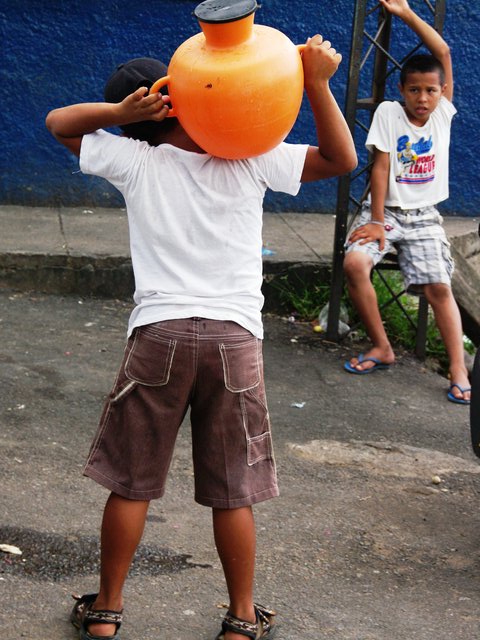

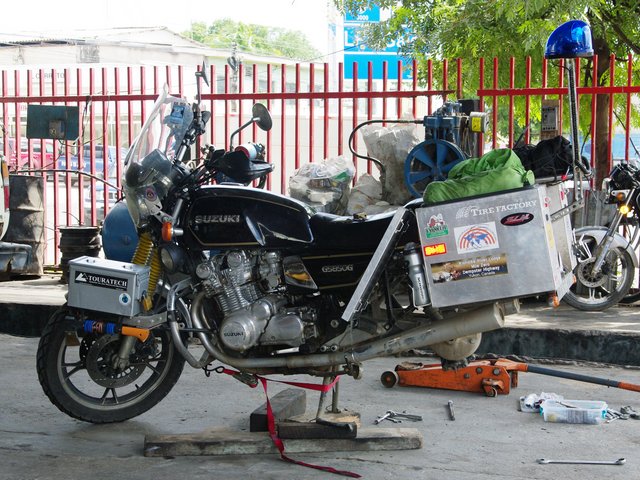
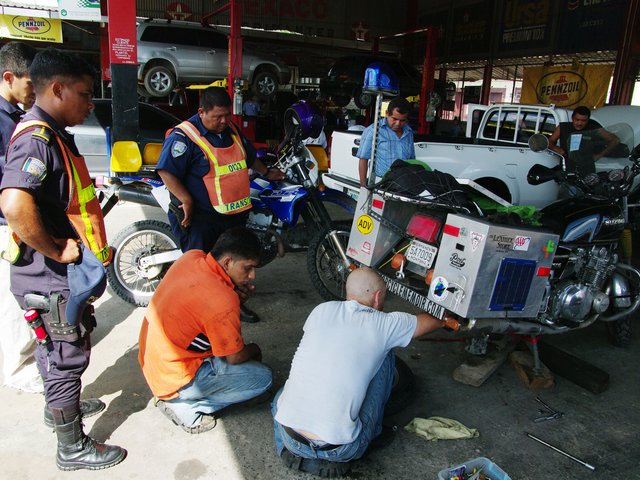
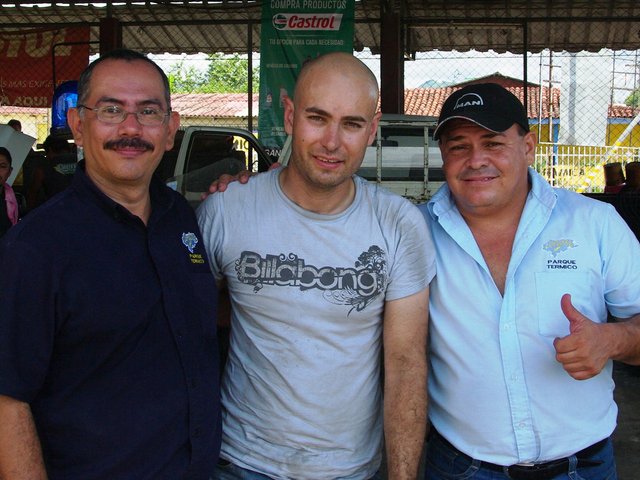
Comment
.png)
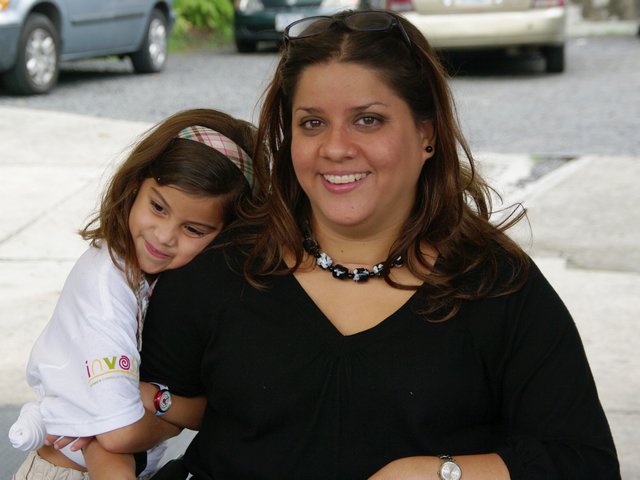
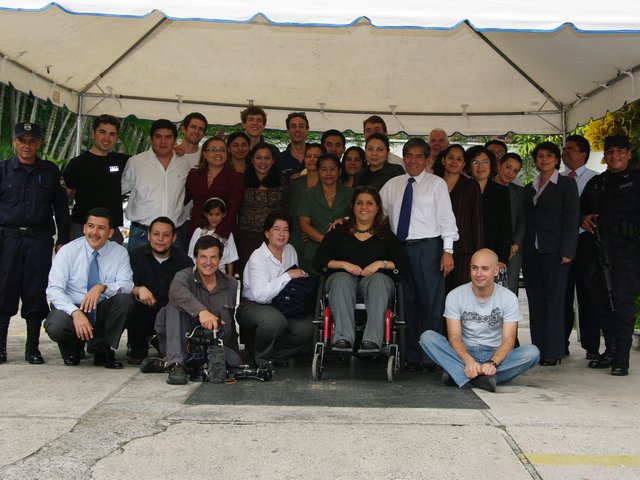
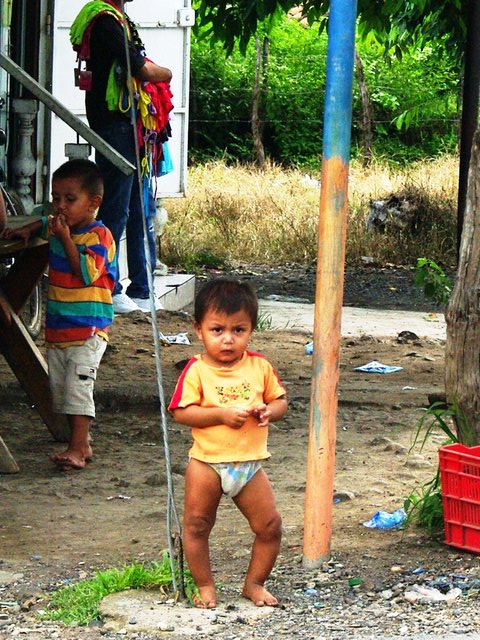
 )
)
Comment